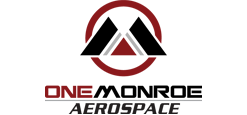
The average speed of a commercial airliner is 460 to 575 mph. At this speed, flights from New York to London take just six to seven hours. Some airplanes, however, can fly faster than the speed of sound. Known as supersonic airplanes, they feature an advanced design that allows them to break the sound barrier.
What Is the Sound Barrier?
The sound barrier is the point at which an object, such as an airplane or even a land vehicle, travels faster than the speed of sound. Also known as Mach 1, the precise speed varies depending on factors such as the environmental temperature and the object’s altitude
It’s called the “sound barrier” because it creates resistance. Airplanes, for instance, experience a sonic boom upon breaking the sound barrier. The air in front of a supersonic airplane will become compressed as it approaches the sound barrier. And once it breaks the sound barrier, all of this pressure will release, resulting in a powerful shock wave.
Origins of Supersonic Airplanes
Breaking the sound barrier is no easy feat. For many years, in fact, scientists believed it wasn’t possible. It wasn’t until October 14, 1947 when United States Air Force Office Chuck Yeager became the first person to achieve this feat with the Bell X-1 airplane.
Since then, dozens of supersonic airplanes have been developed. While most of them were experimental or military airplanes, two of them were designed for civil use: the Concord and Tupolev Tu-144.
How Supersonic Airplanes Are Designed
They may feature many of the same parts as traditional airplanes, but supersonic airplanes are designed differently. For starters, they feature a more aerodynamic design.
All airplanes experience drag during flight, which slows them down. An aerodynamic design allows airplanes to experience less drag and, thus, achieve faster speeds, which is essential for breaking the sound barrier. Therefore, supersonic airplanes often feature thin wings in a delta configuration along with sharp-pointed noses and sleek fuselage bodies.
Supersonic airplanes also feature high-powered jet engines. Engines, of course, are responsible for generating thrust. To break the sound barrier, supersonic airplanes require powerful engines that produce a lot of thrust. Many of them feature afterburner engines that inject fuel directly into the exhaust stream for added power.
Another key design feature of supersonic airplanes is their construction. They are constructed of highly advanced materials that can withstand the heat and pressure of sonic booms. Many supersonic airplanes are made of special alloys that are stronger and more durable than traditional aircraft materials.



